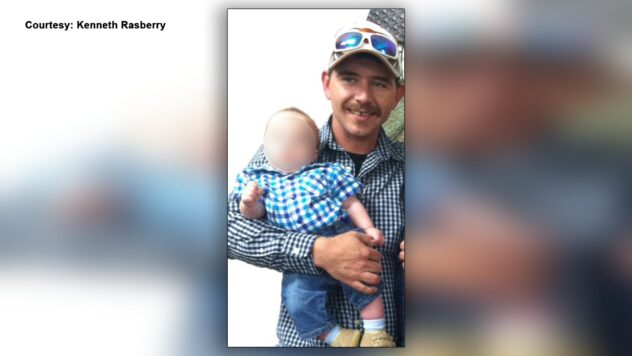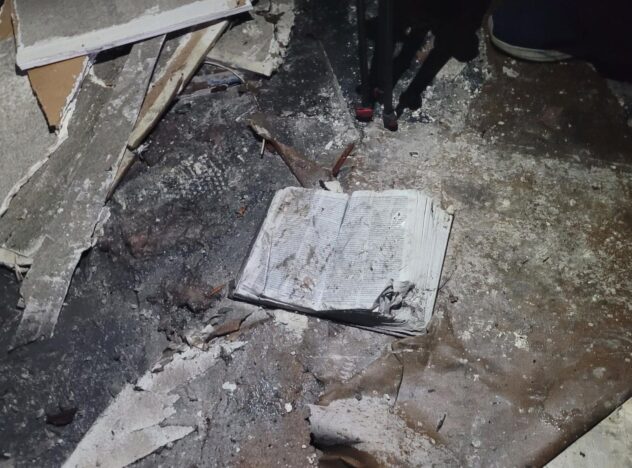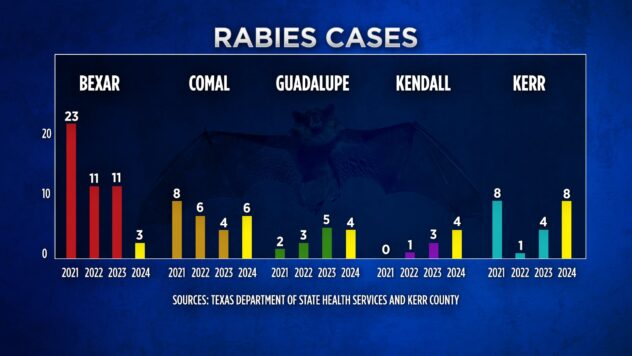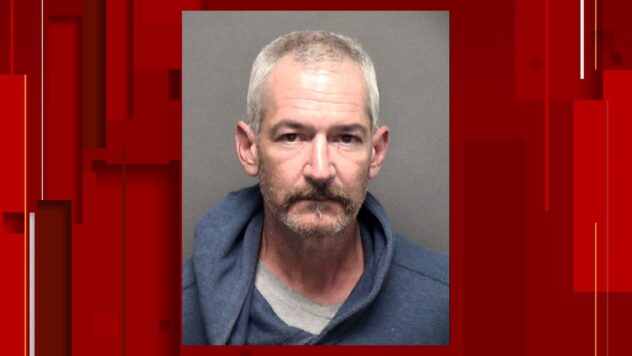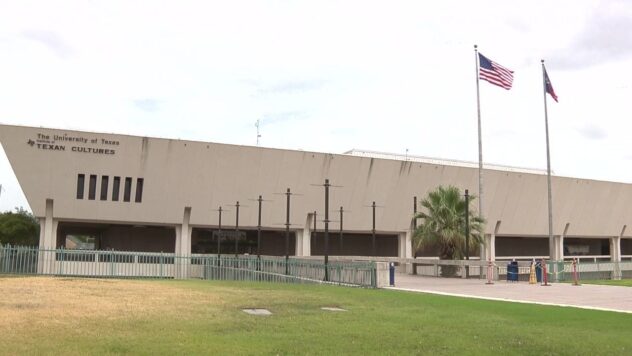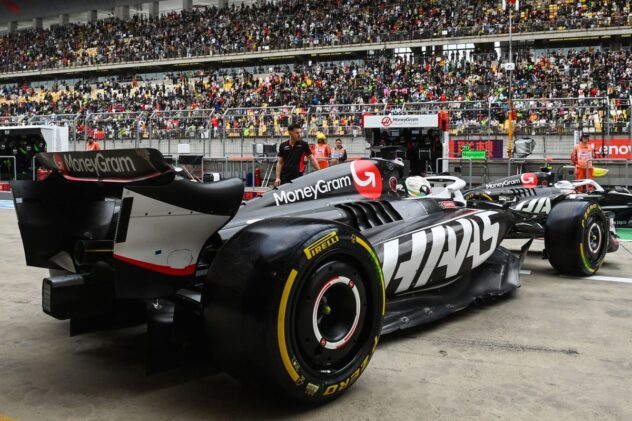‘I would hesitate to say it’s coming to an end’: San Antonio officials on COVID surge
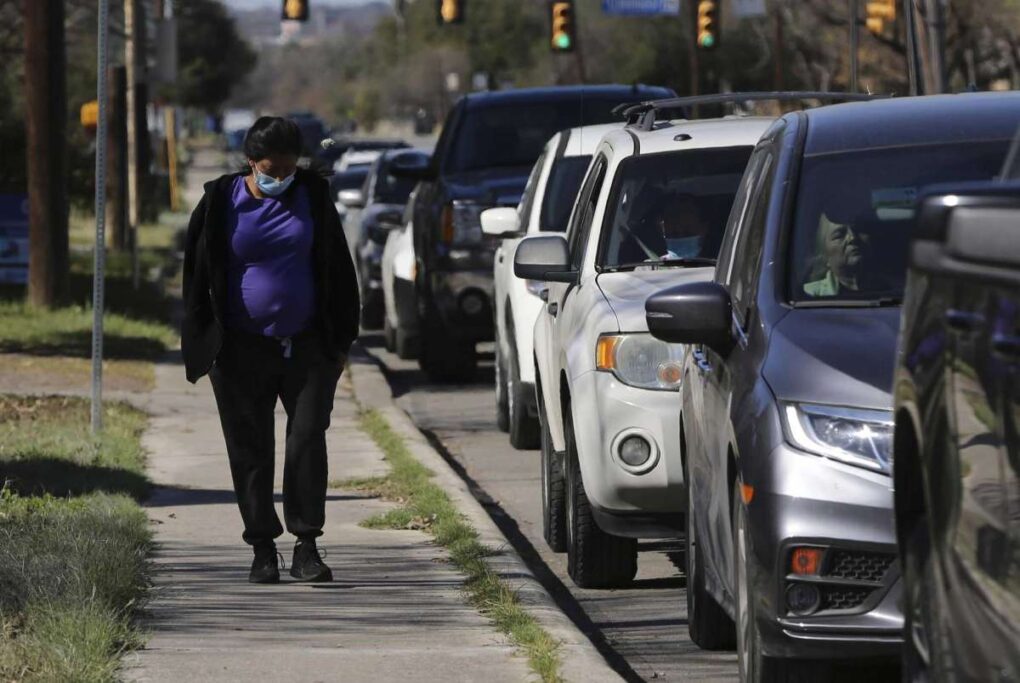
Looking at the daily caseload numbers since the beginning, over 80,000 people in San Antonio have tested positive in the span of over two weeks. It’s safe to say that a considerable amount of those people will have to return to work soon.
The CDC cut the isolation and quarantine period for people in December down to five days. Those who don’t have the option to work from home will return to the workplace, and some of those people may still have COVID-19 present in their body.
Metro Health Assistant Director Dr. Anita Kurian says people can still test positive up to 90 days but that does not mean you’re infectious.
How long are you infectious?
Kurian says most people who have tested positive with the omicron variant of COVID-19 are most infectious one to two days prior to symptoms and three days after a positive test result and the onset of symptoms.
Still some people might be free of any symptoms. But if people are still testing positive after five days, Kurian says they should watch for improvement in their symptoms like remaining fever-free after 24 hours without the use of medication.
I still have a cough
Kurian notes that some symptoms may still persist for weeks after the first 10 days following the onset of symptoms or testing positive.
She says most people are safe to return to a work after five days but should wear a tight-fitting mask for an additional five days.
“Most people are good to come back provided you have shown symptom improvement,” Kurian says.
Metro Health generally recommends that businesses use the symptom-based strategy instead of the test-based strategy when it comes making a decision on when someone can return to work.
However, test-based strategies should still be used for employees who are immunocompromised since they tend to shed the virus much longer.
Drivers seeking COVID testing line the streets around West Woodlawn Avenue and Zarzamora Street near a pop-up testing site.
Kin Man Hui /Staff photographer
Why are so many people testing positive?
Omicron. The latest variant accounts for over 90 percent of positive cases. Kurian says this new variant is highly contagious because the virus tends to double more quickly — in one-and-a-half to two days. The delta variant, for comparison, doubled in about 8 to 10 days.
This has led to San Antonio’s fourth surge in the COVID-19 era.
Fortunately, symptoms for most cases have been less severe than the delta variant for individuals who are fully vaccinated and boosted.
Will it slow down soon?
“The crystal ball is as murky as it can be mighty,” Kurian says.
At the moment it’s hard to make a definitive call as to where we are in this surge. The first surge in 2020 was eight weeks long. The second surge was 17 to 20 weeks long. The third surge was also about 17 weeks.
Looking at the trends, Kurian says this surge could last about 8 to 20 weeks. We are currently in the third week.
“I would hesitate to say it’s coming to an end,” says Dr. Junda Woo, medical director for Metro Health during Friday’s press conference.
Kurian reminds people that the virus is still changing so predictions like this should be taken as just that, a prediction.

Some drive through testing sites had lines that extended almost a mile into neighborhoods, like this one on Culebra on the Westside.
Steven Santana | MySA
What do the numbers look like now?
San Antonio’s positivity rate currently sits at 38.3, a 7 percentage point increase from earlier this week, as new daily caseloads stay in the thousands. But even as four out of five of the city’s indicators hit “critical” risk levels, San Antonio is hanging in the “severe” range.
There were 5,841 new cases and 10 new deaths as of Friday.
San Antonio’s overall risk level also still sits in “severe,” which is a stark contrast to some of Texas’ other major cities like Austin and Houston. Both cities are in their highest risk stages despite some of their numbers being lower in Austin.
Why is that?
Kurian says every city bases their risk levels off of varying metrics.
Austin just breached the 3,000 mark in new cases on Tuesday, according to Austin Public Health. But the Capital City currently in a Stage 5 risk level, which recommends vaccinated people wear masks every where and unvaccinated people avoid public gatherings, travel and dining in restaurants.
Austin’s hospitalizations are much lower than San Antonio at 682 as of Wednesday.
Houston and Harris County are in a similar situation in terms of new case numbers. On January 9, Harris County Public Health and the Houston Health Department reported over 8,000 new cases. It’s most recent new daily caseload dropped to 1,600 new cases for January 20. Houston is currently sitting at a 34.3 percent positivity rate and is also at Level 1 threat level.
Level 1 threat level signifies a severe and uncontrolled spread. The threat level recommends minimizing contact with others wherever possible and staying home except for the most essential needs.
Kurian says that San Antonio hasn’t hit its highest risk level because it factors in the stress hospitals are under, while some cities in Texas might not. Hospital stress levels look at the number of patients with COVID and available resources to treat them (staff, beds, ventilators). Eric Epley, executive director of the South Texas Regional Advisory Council, said at a press conference on Friday, January 21, that area hospitals have received 521 additional contract staff through the state.
The number of COVID patients jumped to 1,263 with 277 people in the intensive care unit as of Friday.
What can we do?
On top of getting the vaccine and wearing masks while in public spaces, Kurian encourages San Antonians to get tested. Knowing you have to take the proper isolation procedures will help mitigate the spread.
San Antonio has 33 free testing sites on its website, including a new FEMA mass drive-through testing site at the Alamodome. The sites collectively tested upwards of 11,600 people on Wednesday. (I didn’t have the best experience with a testing site.)
Of course the increase in testing means a longer wait for results. People should expect to receive their results anywhere between 48 to 96 hours.
Kurian is also encouraging individuals to sign up for the at-home testing kits that are being sent out by the government at COVIDTests.gov. Households can sign up to receive four free at-home testing kits through the mail.
Kurian says that people can sign up for reimbursement through their health care provider for purchasing at-home test kits. Be sure to check with your insurance provider before, as some users have reported that the process was more complicated than expected.
Read more from Steven

